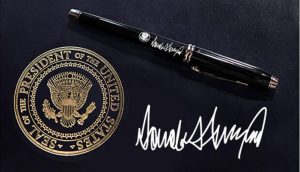
(Photo: livetradersnews.com)
On January 27, 2017, an Executive Order was issued temporarily suspending entry into the United States to foreign nationals from Iraq, Syria, Sudan, Iran, Somalia, Libya, and Yemen for 90 days. According to the order, travelers who have nationality or dual nationality of one of these countries will not be permitted to enter or be issued an immigrant or nonimmigrant visa. The Department of Homeland Security and the Department of State have the authority, on a case-by-case basis, to issue visas or allow the entry of nationals of these countries into the United States when it serves the national interest. However, the US Department of Homeland Security has agreed to comply with judicial orders not to deport detained travelers affected by the executive orders.
On Saturday night, a New York based federal judge temporarily blocked the order for nationals from the specified countries who have already arrived in the US who hold valid visas. Similar rulings were made in Virginia and Washington state, claiming the executive orders to be ‘unconstitutional’. However, two judges in Massachusetts went a stage further, announcing that any travelers affected by the executive orders will be free to travel to Boston for the next seven days. Such rulings hope to address the widespread confusion across the country, as authorities at airports struggle to adjust to the new directive. Beyond the frenzied response seen in the states, Canadians are also struggling to respond to the executive orders.
Under the Executive Orders, Canadians who are dual nationals of one of the above countries will not necessarily be admitted into the states. The Customs and Border Protection (CBP) website indicates that the determination for entry will be made on the basis of the passport presented at the border. However, there have been a number of reported incidents where this official position has not been respected, and dual nationals have run into issues at the border despite showing a Canadian passport. In other words, there is no consistency in adjudication where Canadian dual nationals are concerned. However, the CBP maintains complete discretion to admit or deny anyone they wish, except for American citizens.
With the controversial nature of the executive orders, the situation and response in the US proves to be fluctuating rapidly. We will announce any other changes affecting travelers to the United States as soon as that information is available.